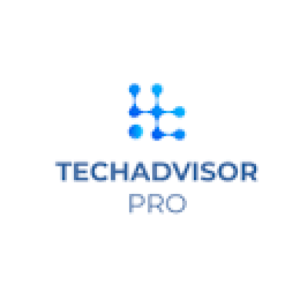With increasing data privacy regulations and rising customer concerns about surveillance, the marketing landscape is undergoing a major shift. Cookies are crumbling, third-party data is drying up, and brands are being forced to rethink how they collect and use customer information. That’s where zero-party data strategies come into play.
Unlike third-party or even first-party data, zero-party data is freely and intentionally shared by the user—think survey responses, preference centers, or product customizations. It’s transparent, consent-driven, and highly valuable. For B2B marketers, it offers a powerful opportunity to personalize engagement while staying compliant with evolving privacy laws like GDPR and CCPA.
In this blog, we’ll explore how to ethically collect zero-party data, the best use cases for B2B businesses, and how to leverage it effectively within your martech stack.
What is Zero-Party Data?
Zero-party data is data that a customer proactively shares with a brand. Unlike first-party data (which is collected through behavior or interactions), zero-party data is given with full awareness and intent.
Examples include:
- Survey responses about preferences or needs
- Subscription form checkboxes (e.g., “I’m interested in X product line”)
- Interactive quizzes or product configurators
- Feedback forms and polls
- Preference centers in email marketing platforms
Because it comes directly from the user, zero-party data is highly accurate and ethically sourced.
Why Zero-Party Data Matters for B2B
In B2B, relationships are complex and long-term. Understanding a client’s preferences, business pain points, and buying behavior helps build more tailored, value-driven experiences.
Benefits of zero-party data in B2B:
- Improved lead segmentation and scoring
- Hyper-personalized email and content marketing
- Better alignment between sales and marketing teams
- Higher trust and transparency
- Stronger compliance with privacy laws
By using zero-party data strategies, businesses can move from assumption-based outreach to insight-based communication.
Ethical Collection Methods: Building Trust from the Start
Trust is earned, not assumed. To ethically collect zero-party data, you must be transparent, value-driven, and respectful of user privacy.
Best practices:
- Clearly explain why you’re asking for the data and how it will be used.
- Offer immediate value in exchange (e.g., customized report, gated content, product recommendations).
- Use progressive profiling—don’t ask for too much at once. Start small and build over time.
- Ensure data collection tools are GDPR/CCPA compliant and include opt-in/opt-out features.
- Be honest and human in your tone—avoid vague jargon or legal-speak that discourages interaction.
Tip: Embed short preference polls in newsletters or gated lead magnets to collect zero-party data without friction.
Smart Use of Zero-Party Data in Your Martech Stack
Collecting data is just one part of the strategy—putting it to work is where the ROI lies. Here’s how to integrate zero-party data into your B2B martech stack:
1. CRM Integration
Sync preference data directly with your CRM (e.g., HubSpot, Salesforce). This allows sales reps to tailor outreach based on the prospect’s expressed needs or interests.
2. Email Marketing Personalization
Use platforms like Mailchimp, ActiveCampaign, or Klaviyo to trigger personalized content flows based on declared preferences.
3. Dynamic Website Experiences
Platforms like Optimizely or Adobe Target can deliver custom landing pages or product recommendations based on zero-party inputs.
4. Analytics and Segmentation
Feed collected data into tools like Segment or Customer.io to create smart segments for future campaigns or nurture flows.
Privacy Compliance: GDPR, CCPA, and Beyond
Zero-party data is inherently privacy-forward, but brands still need to follow proper protocols.
Key requirements:
- Obtain explicit consent before collecting data
- Offer clear opt-out mechanisms
- Allow users to access or delete their data
- Store data securely and use only for stated purposes
Make sure your data collection forms, cookies, and martech tools support GDPR and CCPA compliance. Tools like OneTrust and TrustArc can help manage consent and audit trails effectively.
Example
A B2B SaaS platform embedded a short onboarding quiz for new trial users, asking about their industry, goals, and team size. This zero-party data was fed into their marketing automation platform, allowing personalized email journeys and tailored product demos. The result? A 42% increase in demo-to-customer conversion rate within 60 days.
Zero-Party Data vs. First-Party Data: Know the Difference
Understanding the distinction between zero-party and first-party data is crucial for building a privacy-compliant and effective marketing strategy. Here’s how they differ:
1. Source
- First-party data is gathered through user behavior, such as website visits, email interactions, or app usage.
- Zero-party data is intentionally and directly shared by the user, like filling out a survey, selecting preferences, or responding to a quiz.
2. Consent
- First-party data is collected based on implied consent through user interaction.
- Zero-party data requires explicit consent, as the user knowingly provides specific information.
3. Accuracy
- First-party data often requires interpretation or inference to determine intent or preferences.
- Zero-party data is highly accurate, as it’s self-declared by the user.
4. Common Use Cases
- First-party data is typically used for analytics, retargeting, and personalization based on browsing or purchase behavior.
- Zero-party data is ideal for customizing content, product recommendations, or segmenting users based on stated interests and needs.
Conclusion
As third-party cookies phase out and privacy regulations tighten, zero-party data strategies offer a future-proof way to understand and serve B2B customers. By collecting declared preferences in ethical ways and integrating them into your martech stack, you can unlock deeper personalization, better conversion rates, and long-term trust.
It’s time to stop guessing what your customers want—just ask them.










